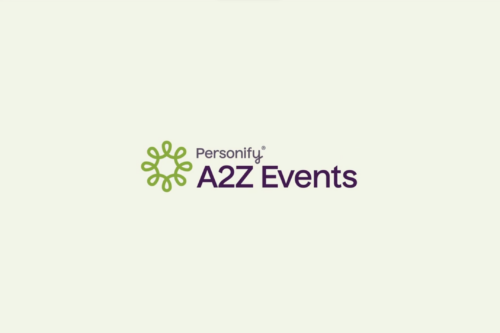A great conference agenda defines the event’s purpose, who will speak and when, and the conference location and activity. It is the most important tool available for encouraging attendee engagement, establishing expectations for their experience, and guiding them to the right locations at the right times during the conference.
Sometimes underestimated, the conference agenda is a primary planning and coordination tool for the event organizer, suppliers, and vendors or sponsors who use the conference for business development purposes.
The conference agenda is the plan upon which attendees build their personal conference plans and itinerary. It is one component of your conference that needs to shine.
What Is in a Conference Agenda?
Conference agendas are the brains and nervous systems of conferences. They benefit everyone involved in planning, executing, and attending the conference, including:
- Participants or attendees
- Guest speakers
- Sessions and workshops
- Vendors
- Suppliers
- Event sponsors
The best conference agendas allow the smooth movement of attendees from one session to the next while guiding the efforts of the other groups before, during, and after the event.
A conference agenda is more than a mere outline of activities — it’s the blueprint of the entire event. Similar to a run of show, it provides the conference plan in summary and with sufficient detail to entice attendance and to guide attendees as they move among the sessions, always knowing what comes next, where they need to be, and how to get there.
The larger the conference and the greater the number of sessions or learning opportunities, the greater the need for the agenda to direct attendees through the maze of sessions, speakers, and venues.
Conference agendas also help attendees with broader logistics, such as assisting them in finding restrooms, hospitality suites, quiet locations for telephone calls, or just relaxing and reflecting on the day’s activities.
Beyond serving the attendees, the agenda also plays a pivotal role for organizers. It offers insights into the event’s flow, highlights potential conflicts or shortcomings that may need adjustments, like potential timing clashes, and provides the time to resolve those conflicts in advance before they become apparent to the public.
While the conference is underway, the agenda also clarifies where speakers and support staff need to be and when, so nothing goes astray, and everything flows with precision.
What Should You Include in a Conference Agenda?
Conference planners have a lot of latitude in what to include in their conference agenda to make it unique and valuable. However, there are a few staples that should be included in all conference agendas.
1. Cover Page
The cover page is the first impression of your conference agenda. Including the conference name, logo, dates, and venue creates an immediate, clear identification of the event.
A welcome message or a brief introduction to the conference theme sets the tone and provides context, helping attendees to align their expectations and interests with what the conference offers.
2. Table of Contents
The Table of Contents serves as a roadmap for the agenda. It facilitates easy navigation through the agenda, allowing attendees to quickly find the information they need, like specific sessions or speaker details. This is particularly useful in larger conferences with multiple tracks or sessions.
3. General Conference Information
This section is crucial for logistical ease. Providing a venue map helps attendees navigate the space efficiently. Wi-Fi access and social media information encourage digital interaction and sharing, enhancing the event’s reach. Contact information for organizers or help desks ensures that attendees can easily seek assistance or information.
4. Detailed Schedule
A day-wise breakdown of the schedule helps in planning and time management. Listing session details with time, location, and titles provides a clear structure to the day. Including speaker information adds a personal touch and helps attendees identify breakout sessions of interest. Scheduled breaks and networking times are essential for relaxation and interaction among participants.
- Day-wise Breakdown: List each day’s schedule separately for clarity.
- Session Details: Time, location, title, and a brief description of each session.
- Speaker Information: Names and titles of speakers for each session, with their photos if space allows.
- Networking and Break Times: Clearly marked lunch, coffee breaks, and any scheduled networking events.
5. Speaker Biographies
Short biographies of speakers provide valuable context about their background and expertise. This helps attendees gauge the relevance of sessions to their interests or professional development. Including photos can make the document more engaging and helps in recognizing speakers during the conference.
6. Session Descriptions
Detailed session descriptions give a deeper insight into what each session will cover, including its objectives and key topics. This helps your attendees decide which sessions are most relevant to their interests or professional goals.
7. Exhibition and Sponsor Information
For conferences with exhibitions and sponsors, this section acknowledges the contributors and guides attendees to the exhibition areas. It helps in recognizing sponsors’ support and directs traffic to exhibitor booths, maximizing exposure and interaction.
8. Additional Events
Including information on special events adds value to the overall conference experience. It promotes networking and social interaction outside the formal sessions, often being a highlight for many attendees. Highlight any special events, such as dinners, cultural performances, after parties, or post-conference tours.
9. Acknowledgments and Thanks
Acknowledging sponsors, organizers, volunteers, and staff shows gratitude and recognizes the effort behind the conference. It fosters a sense of community and appreciation among all participants.
10. Feedback and Contact Information
Encouraging feedback is vital for continuous improvement. Providing contact information or links for post-conference surveys or networking supports ongoing engagement and community building beyond the conference.
11. Notes Pages
If you are providing a printed agenda, including blank pages for notes is a thoughtful addition. It allows attendees to jot down key points, ideas, or questions during sessions, enhancing the learning and engagement experience.
Conference Agenda Best Practices
Creating effective conference agendas does not happen by chance. They start with a well-defined purpose for the conference, followed by hard work by event organizers and a willingness to follow best practices. Below are several best practices used by today’s top event organizers.
Know Your Audience
It’s crucial to know who your attendees are. This includes understanding their professional backgrounds, industry sectors, levels of expertise, and even geographic locations. The more you know about your audience, the better you can tailor the conference content to suit their interests and needs.
Consider what your attendees expect to gain from the conference. Are they looking for educational opportunities, networking, or insights into specific industry trends? Understanding these expectations helps in designing sessions and activities that are engaging and valuable to your audience.
Based on the demographic data and expected needs, you can customize the conference agenda to resonate more effectively with your audience. This might involve choosing certain topics over others, selecting keynote speakers who are particularly relevant, or even the style and format of the conference sessions.
Clarify Your Conference Goals
Establish Your Vision
Start by establishing a clear vision for your conference. Your vision should encapsulate the broader impact you hope your conference will achieve. From this overarching vision, distill specific goals. These could range from educational objectives, such as introducing new knowledge or skills, to networking aims like connecting professionals within your industry.
Alignment with Organizational Goals
If the conference is tied to a specific organization, it’s crucial to ensure that the goals of the conference align with the organization’s wider objectives. This alignment helps in garnering support, resources, and adds to the overall coherence of the event.
Set Goals for Different Audiences
Recognize your conference might have various goals catering to different groups of attendees. For instance, for newcomers, the goal might be introductory learning, whereas for veterans, it might be advanced knowledge or networking.
By setting a clear, well-aligned set of goals, you ensure that your conference has a defined direction and purpose, which aids in making decisions about the structure, content, and target audience of your event.
Conduct Pre-event Surveys
Reviewing the feedback from the previous year’s event helps design the upcoming conference agenda. Still, a lot can change in a year, so conducting pre-event surveys with previous attendees can help identify topics and speakers of interest to your target audience.
While the primary survey role is information gathering, they also rekindle interest in your event, providing a promotional nudge, especially when the destination and venue are of interest.
In addition to the conference content, pre-event surveys can identify preferences for presentations, panel discussions, interactive workshops, or other formats and gauge interest in recreational activities that may accompany your conference.
Choose the Right Speakers and Facilitators
Attracting industry leaders to give keynote addresses, lead discussions, or present can maximize your attendees. Individuals whose positions or experience in the industry provide the credibility to lead discussions are vital to giving your conference credibility while also sparking interest in attending.
After all, conference attendees want to hear from those who have demonstrated success or have something new to offer to the industry.
Besides expertise, consider speakers’ ability to engage and connect with the audience. Good public speaking and presentation skills are essential to keep the audience interested and involved.
By choosing the right mix of knowledgeable, engaging, and diverse speakers, you can significantly enhance the overall quality and appeal of your conference, making it both informative and memorable for attendees.
Properly Structure the Conference Information
Your conference agenda is the source of truth for your attendees. They will come to rely on it throughout your event. It’s pivotal that you structure information about your event to be clear and informative so that attendees can easily navigate your conference. Here is some key information your agenda needs to include.
Session Types and Variety: Develop a varied program that includes different types of sessions such as keynotes, panels, workshops, and networking events. This diversity caters to different learning styles and interests, keeping the agenda dynamic and engaging.
Scheduling and Timing: Plan the schedule carefully, considering the ideal duration for each session and including adequate breaks. Balance the timing to ensure sessions are long enough to be informative but not so long that they lead to fatigue. Allocate time slots based on the natural flow of the day, with high-energy sessions during peak times and more relaxed sessions during typical low-energy periods.
Logical Flow of Content: Arrange the sessions in a logical sequence. Start with broader, more general topics and gradually move towards more specific or advanced content. This approach helps in building a coherent narrative throughout the conference and makes it easier for attendees to follow and absorb the information.
Effective structuring of the conference agenda is key to providing a smooth, engaging, and valuable experience for all attendees, ensuring that they can make the most of the event.
Sync the Agenda with an Event App
A primary benefit of syncing your agenda with an event app is updating the agenda on the fly. While we prefer our agendas to remain unchanged once finalized, things happen that cause speakers to cancel or room assignments to change.
The ability to update the agenda via an app has become an expectation, mainly because today’s attendees universally carry mobile devices. Also, using an app means less need for and waste associated with printed agendas.
Apps also allow attendees to tailor how they interact with the agenda. They can view the sessions by topic, room, date, and time while also being able to search by keywords, such as speaker names. Apps also allow organizers to embed information about the speakers, their presentations, or other information that users can use to choose the sessions that best meet their needs.
Participants who prefer to choose their sessions in advance often like to sync their selections with their personal calendars, making the ability to sync a key benefit to many app users.
Finally, apps allow organizers to obtain feedback before, during, and after the event, enabling you to gather information when the experience is freshest and when you may still be able to remedy potential issues.
Benefits of a Well-Designed Conference Agenda?
The role agendas play in engaging attendees, defining speaker expectations, and helping vendors maximize the business gained by participating in the conference should not be underestimated. Agendas are also crucial for suppliers and organizers because conference agendas help them define and prioritize their workflows.
Below are four key benefits of effective agendas that differ in importance among audiences.
Efficient time management
An underappreciated role for many agendas is to convince potential attendees to spend their time and money to attend your conference. In a world filled with unlimited alternatives, a well-designed agenda featuring attractive speakers and sessions can separate your conference from the others or from potential attendees skipping a conference altogether.
Your agenda creates positive expectations or indifference about your event’s topics, speakers, venue, and other elements. Properly constructed, your agenda convinces potential participants that attending your conference will efficiently use their time and that they will leave your conference better equipped to slay their workplace dragons.
Streamlined conference experience
A primary purpose of the agenda is to get everyone to the right place on time. A seemingly simple task on the surface, top conference organizers know that nothing should interfere with achieving that purpose. Part of ensuring participants get to the right place is allowing them to pre-plan which sessions to attend and, once on site, to confirm their session choices.
A great agenda also leaves time during the day for attendees to return calls and respond to urgent emails while also providing ample time to mix with presenters and attendees for follow-up questions and networking. Your agenda should direct attendees efficiently and clearly outline breaks to ensure a smooth experience without chaos and confusion.
A streamlined experience is also vital to vendors or sponsors who help pay for the conferences through their exhibits and other fees. For them, an effective agenda maximizes the number of attendees and helps them anticipate exhibit staffing levels throughout the conference.
Elevated discussions
Speakers want to present to engaged capacity audiences. Your session descriptions help fill the room with people eager to learn about the topics and engage in lively discussions. Likewise, proper planning helps your speakers avoid technological or logistical challenges under the conference’s control. Instead, with logistics well in hand, speakers can channel their energy into delivering riveting and impactful discussions.
Cost-effectiveness
A defined structure, as presented by the agenda, offers clarity on resource needs, paving the way for optimized budgeting. The venue operators, technology, and food and beverage suppliers submit budgets and coordinate their efforts based on your agenda, so its level of clarity and accuracy directly affects their ability to execute their tasks efficiently and effectively. Fully arming them with the information they need to budget and plan properly avoids confusion and the potential for additional charges due to errors in the conference agenda.
Likewise, as the conference organizer, the agenda is crucial for your budgeting and expense control. While some unanticipated events are bound to happen, a tightly scripted agenda helps the sessions run like clockwork while providing plenty of opportunities for the unplanned interactions that make conferences so valuable to participants.
Ready to Create the Best Conference Agenda?
Conference agendas are the brains, the eyes, and the ears of events for the attendees, speakers, those involved in hosting the event, and sponsors interested in developing business with conference attendees. They inform everyone involved in the conference regarding their choices, where they must be, and when.
Effective agendas both guide the event planning process and result from effective planning.
Of course, planning and organizing important conferences takes work, but the process can be more effectively coordinated with leading event management software like A2Z Events.
A2Z Events integrates attendee marketing, event registration and payment systems, floor planning, sponsorship management, and attendee mobile apps into one package while easily connecting with your existing systems and databases. If you want to coordinate your events better and enhance the experience of everyone involved in your conferences, book an A2Z demo today so you are fully prepared for your next big event.










